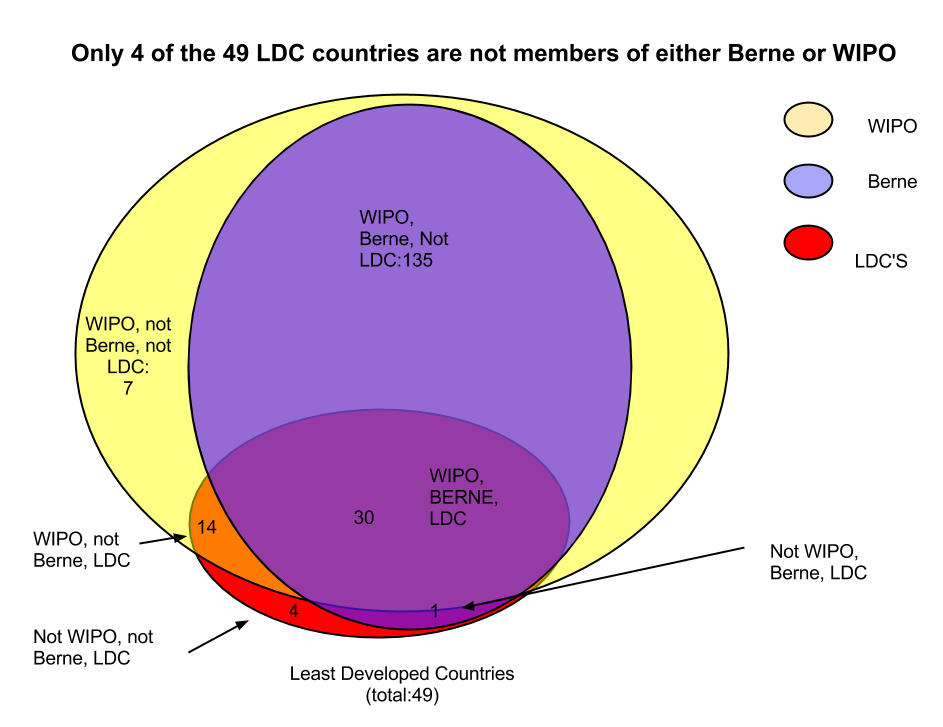Much of the April negotiations on the treaty for copyright exceptions for persons with disabilities was spent discussing the issue of countries that are not members of the WTO, or the Berne Convention, or countries classified by the UN as least developed countries (LDCs), and currently not bound by the TRIPS agreement provisions on copyright.
During the negotiations it was pointed out that most developing countries have very strong pro-right holder laws on the books (take a look at the Bangui Agreement, for example), regardless of whether or not they are formally bound by other agreements. This note looks just at the least developed countries, which currently have some limited flexibility as regards WTO obligations on copyright. There are 49 LDC countries, and in 2011, they had a population of 854 million persons.
Of the 49 Least Developed Countries, 30 are members of WIPO and the Berne Convention. The population of these 30 countries is 492.5 million.
There are 14 Least Developed Countries that are not members of the Berne Convention, but are members of WIPO. These 14 countries have a population of 303.3 million. The four largest countries in this group are Ethiopia (84.7 million), Myanmar (48.3 million), Afghanistan (35.3 million) and Uganda (34.5 million).
There is one least developed country, Tanzania, which is a member of the Berne Convention, but not a member of WIPO. Tanzania has a population of 46.2 million.
There are just four least developed countries that are not members of WIPO or the Berne Convention. These are the Solomon Islands, South Sudan, Timor-Leste and Tuvalu. These four countries have a population of 12 million.
Below is a venn diagram, by Fedro Paolo De Tomassi, which illustrates these data in a figure.
